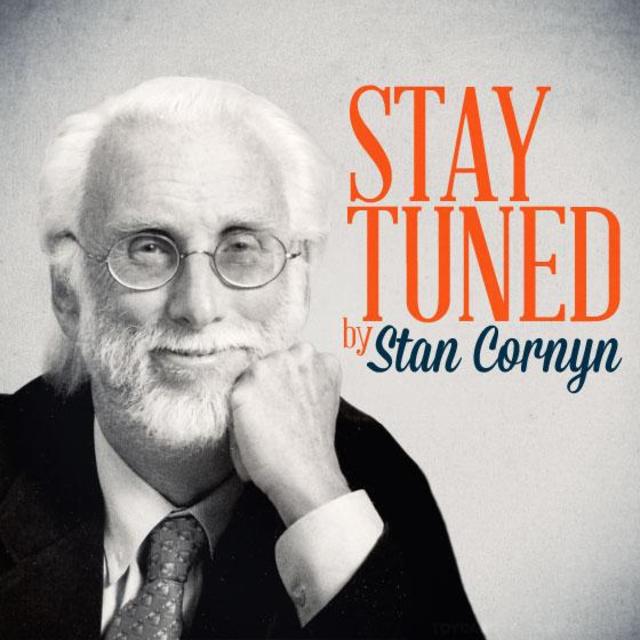Stay Tuned By Stan Cornyn: How Depeche Mode Changed Your Life

Every Tuesday and Thursday, former Warner Bros. Records executive and industry insider Stan Cornyn ruminates on the past, present, and future of the music business.
Or at Least Your Ears.
Before the 1980s, your ears heard music mellow. Brass bands? Yep, mellow. Rock, mellow too.
What changed? The instruments. They no longer needed to be made of brass, or string, or fine wood. Actually, they no longer needed to be made of anything but electronics. Electronics that their players could make sound like anything.
Back to England, 1981, a wee group named itself Depeche Mode, because that, translated from French, means “Fashion Update.”
And this group (usually a quartet) from the town of Basildon, Essex, England, was, unlike its hometown, into updating pop. New ways for pop to sound.
They have sold over 100,000,000 records world wide, at last count. Mostly on labels named Mute in England (founded by Daniel Miller, himself an electronic musician), and Seymour Stein’s Sire label in America. (And soon enough, on Rhino. Right here.)
Sire Brings Them In and Over
Over in England, indie label Sire signed fringe acts; those it could afford. Fortunately, the label aimed at punk and new wave, and came up with the Ramones, Talking Heads, and the like.
In 1977, Sire landed U.S. distribution with Warner Records, which one year later bought the label. A good deal, since Sire would become the signer of Madonna, Ice-T, Echo & The Bunnymen, the Pretenders, the Cure, not to overlook Depeche Mode.
The 1980s
The main members of Depeche Mode were four:
Dave Gahan (front man; lead vocals)
Alan Wilder (keyboard, drums)
Martin Gore (keyboards)
Andy Fletcher (keyboards)
During the 1980s, Depeche Mode issued six albums and they dominated mainstream electronic music. They’d grown up through silly-named bands in their school days, bands like No Romance in China, Norman and The Worms, and Composition of Sound. Their ears were open, and when they heard the beginnings of electronic music (a single “Electricity,” by an electronic duo that called itself Orchestral Manoeuvres in the Dark), they heard their own future.
Depeche Mode couldn’t afford it, but they bought their own synthesizers (aka “keyboards”) to make new sounds of music. For their group name, they’d copied a French magazine for their group name, because they wanted to be “out front.”
They made a demo tape, and took it to record labels, and sat there in the office, insisting that the label play the tape. Labels hardly behave that way, though. Vocalist Dave Gahan recalled, “Most of them would tell us to fuck off. They’d say ‘Just leave the tape with us.’ We’d answer “it’s our only one.” Then we’d say ‘bye and go to another label.”
But they were in London now, dragging their synthesizers around town by hand until their first Mute Records single, “Dreaming of Me,” got to #57 on the English charts. Then their second single, “New Life,” up to #11. Then their third, a Top Ten now – “Just Can’t Get Enough” -- which even got them their first music video.
That early video’s viewable here:
Three hit singles in a row. Depeche Mode had found an audience with new ears.
By the end of the Eighties, they were recording in Milan (the one in Italy), and that single “Personal Jesus” got attention via ads in London personal columns offering “Your own personal Jesus,” along with a phone number to dial and hear the side. That got more attention, #13 on the charts, and their biggest seller of the decade. On Sire, it even came out as a 12” single.
1990 = Violator
The BIGGEST splash opening of any album came in 1990. Depeche Mode sold big, chart topping like those four Beatles, and other whoppers.
The cause of this topping was a synth-pop album named Violator, a title they explained as “a joke. We wanted to come up with the most extreme, ridiculously Heavy Metal title that we could.” They thought of Violator as a pro-rapist word.
The album came out in January, produced by the group itself and Mark “Flood” Ellis. Recordings began at Mute’s London studios, then down to Milan where they recorded “Personal Jesus.” Then up to Puk Studios in North Denmark. In it was one of the band’s most successful Top Ten singles, “Enjoy the Silence.” By now, Depeche Mode felt “American.” They’d also learned how to make headlines.
They announced they’d appear to sign autographs at a Los Angeles record store, Wherehouse Entertainment. Nearly a riot ensued. Over 20,000 fans showed up for autographs.
Experience the Wherehouse fan riot:
Depeche Mode were now a stadium sell-out act. Their “World Violation Tour” sold out New York’s Giants Stadium – 48,000 tickets sold in four hours. Ditto selling out Los Angeles’ Dodgers Stadium.
For this entire “Tour,” Depeche Mode played before 1,200,000 fans.
More major hits popped up, like “Policy of Truth.”
Check out the official video for "Policy of Truth”:
Beyond “Policy of Truth,” still one more single captured radio for Violator: “World in My Eyes,” which was, to Flood, quite positive: “It’s saying that love and sex and pleasure are positive things.”
Now let my body do the moving
And let my hands do the soothing
Let me show you the world in my eyes
That's all there is
Nothing more than you can feel now
That's all there is
Let me put you on a ship
On a long, long trip
Your lips close to my lips
All the islands in the ocean
All the heaven's in motion
Let me show you the world in my eyes
That's all there is
Nothing more than you can touch now
That's all there is
Violator went Top Ten, both in the UK and US markets. On the Billboard charts, it stayed in the top 200 for 74 weeks, getting up to #7. It was the first Depeche Mode album to sell a million in America (now over three million), with four singles up the Billboard 100.
In Hollywood, challenged by director Wim Wenders to create music for his “music of the year 2000,” Depeche Mode came forward with “Death’s Door.” It made the soundtrack album.
1993 + Songs of Faith and Devotion
Two exhausting and enriching years later, Depeche Mode was still discovering synth-pop, now with some grunge added. They’d discovered more and more how to make fresh music with fresh distortion.
One Depeche Mode “keyboarder,” Alan Wilder, told reporters …
“There’s so many sounds that are created from the voice that you wouldn’t know were taken from the voice, like rhythm sounds. The number of times I’ve been sitting in the studio and said, ‘I wish I could get a bass that would go [mimics wet, thick hip-hop bass-drum sound.’ Then I think, ‘Why can’t I just go [repeats that noise] into a mike and sample it’ It’s obvious. You spend all day trying to get a synthesizer to create this sound, but you can just go [repeats noise] and you’ve got it… something that sounds absolutely nothing like a voice, but the source was a voice…”
The band made more and more “instrument” sounds, from gospel vocals to live strings to uilleann pipes.
To create their next album, producer Flood first suggested that the band rent a villa in Madrid, where the band could both live and record (he’d done this with U2 before). Synthesizers that were huge got installed in the villa, but the band’s problem of “no time off” became tedious. “Claustrophonic” was how it now felt, all this time together, regardless of such experiments as:
The track “Judas” had uillean pipes recorded with reversed reverb mixed in, giving it that haunting feel. A mass of other “distortion tools” were tried on every track.
The band now argued a lot with one another. Getting to a final cut was “like pulling teeth,” recalled Flood.
Still, singles would emerge, some of the band’s best, like “In Your Room” and “Walking in My Shoes.”
That December, another world tour, this one called the “Devotional,” came next, along with a concert film. The tour went on and on, 14 months, 27 countries, and 158 performances before two million in audiences. The band went beyond consciousness. The press listed this 1993 tour as –
“The Most Debauched Rock’n’Roll Tour Ever.”
And band member Martin Gore summed it all up simply: “I don’t think anyone was ever the same after that tour.”
***** *****
-- Stay Tuned

